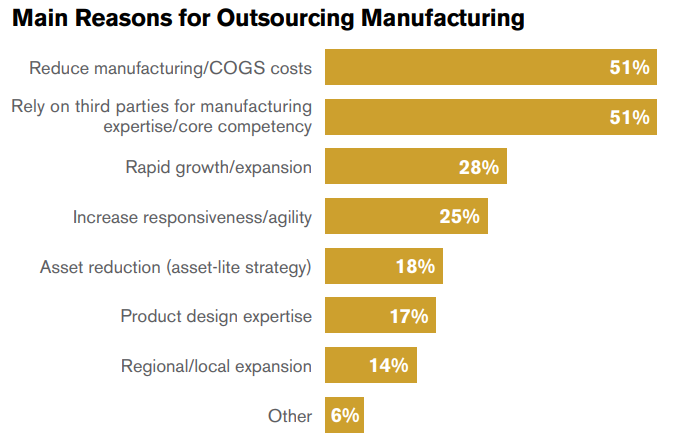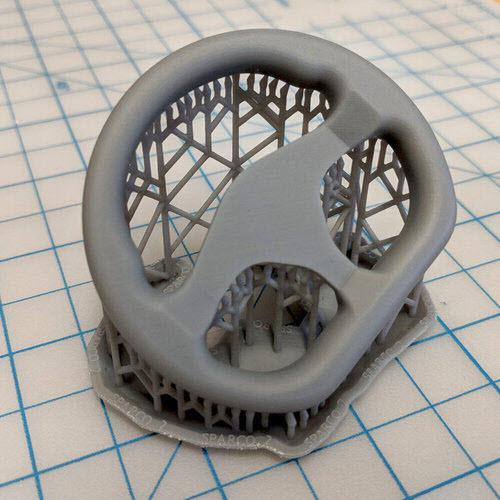- FMA
- The Fabricator
- FABTECH
- Canadian Metalworking
Our Publications
Categories
- Additive Manufacturing
- Aluminum Welding
- Arc Welding
- Assembly and Joining
- Automation and Robotics
- Bending and Forming
- Consumables
- Cutting and Weld Prep
- Electric Vehicles
- En Español
- Finishing
- Hydroforming
- Laser Cutting
- Laser Welding
- Machining
- Manufacturing Software
- Materials Handling
- Metals/Materials
- Oxyfuel Cutting
- Plasma Cutting
- Power Tools
- Punching and Other Holemaking
- Roll Forming
- Safety
- Sawing
- Shearing
- Shop Management
- Testing and Measuring
- Tube and Pipe Fabrication
- Tube and Pipe Production
- Waterjet Cutting
Industry Directory
Webcasts
Podcasts
FAB 40
Advertise
Subscribe
Account Login
Search
Why companies should reshore prototyping and other manufacturing operations
Service bureau explains why offshoring isn’t always a good strategy
- By Empire Group USA
- January 17, 2021
Following is an edited excerpt from a white paper published by manufacturing services provider Empire Group.
The call to “bring manufacturing back home” has become increasingly audible during the past four years. Even before the onset of the COVID-19 pandemic in 2020, reshoring was becoming more attractive to U.S. manufacturers because of the trade war with China, tax incentives, and a lack of transparency in supply chains.
For years, meeting offshoring manufacturing needs has been more of a habit than a solid strategy. What started as a move to lower costs has become a logistical nightmare rife with transportation delays, trade regulations and tariffs, intellectual property concerns, quality control, and business disruptions.
Plus, many of the reasons why offshoring began in the first place are no longer applicable to manufacturing in the 21st century. Major companies like GE and Apple have been among those leading the charge to bring their tooling production, component manufacturing, and assembly closer to home by reshoring and near-shoring these operations.
Surveys show that a growing number of manufacturers are planning to reshore or near-shore some or all of their manufacturing operations in the future.
But what does it mean to reshore prototyping and production operations? What advantages might come of reshoring or near-shoring these operations? And, ultimately, why might it be worth your time and money to change up your manufacturing supply chain for the near or long term?
Empire Group has been paying attention to these issues that our customers face. A white paper we recently published, Reshoring Prototyping & Production, offers a practical guide to mitigating risk and avoiding disruptions.
Among the key subtopics the paper discusses are:
The traditional supply chain. Companies like Ford, Nike, and Cisco are well-known for outsourcing their production overseas and have been rewarded with substantial reductions in the cost of goods sold and the price at the point of sale. Outsourcing production overseas allow consumers to pay less and companies to earn more.
Prices and pandemic. Because of the low labor and production costs offshoring provides, most manufacturers tolerate the additional transportation costs, complex logistics, and international tariffs associated with manufacturing overseas because they can be justified. However, in the past decade increases in the cost of fuel, shipping, and overseas labor, and, more recently, the COVID-19 pandemic, there has been a trend towards regionalization and localization in manufacturing.

According to a report conducted by Peerless Research Group, the reasons companies outsource their production include the cost of goods sold and the ability to leverage the knowledge and expertise that is not present internally. Peerless Research Group
Supply chain diversification and local manufacturing. One path U.S. manufacturers are taking to mitigate future risk is supplier diversification. This diversification might mean rebuilding your supplier ecosystem through new local and foreign partnerships.
Where and when to source local. Using a hybrid approach to diversify the supplier ecosystem, individuals responsible for sourcing goods and services in product development can effectively reduce dependency on any one geographic region and build resilience through a combination of foreign and domestic production partners. Ideally, these partners will be local job shops, service bureaus, and contract manufacturers with the knowledge, capacity, and speed to meet the quality companies expect from their foreign production partners while also adding significant value above and beyond expectation.
The most significant benefits of locally sourced industrial goods and services include drastically shorter delivery times; enhanced communication; reduced concerns over IP security; rapid response and iteration; direct shipments; and quality assurance.
Engineers, purchasers, and operations professionals tasked with re-evaluating supplier relationships within highly competitive industries should consider reshoring for four areas of production:
1. Strategic, high-value parts, regardless of volume.
2. Low to mid-volume numbers of parts and components, where the benefit in cost overseas is not as compelling.
3. Prototyping projects that require IP security, specialized knowledge, advanced technologies, or materials.
4. Critical parts, components, or mass-customized products that would benefit from the flexibility of manufacturing locally on demand.
When choosing local suppliers, seek onshore contract manufacturers, job shops, or service bureaus that:
• Co-create solutions and remain transparent in their processes.

In addition to prototyping, Empire offers 3D printing, engineering, industrial design, postprocessing, and resin casting. Empire Group
• Are agile enough to manage change and shifting directions or deadlines quickly.
• Provide access to a broad range of services and expertise and can limit the extent of third-party involvement.
• Offer advanced technologies, like additive manufacturing, and incorporate them into the product development cycle.
• Have the capacity to allow for pivots in supply and production.
• Maintain the highest level of excellence in communications at all levels of project management.
Finding a local provider that meets these requirements will play a pivotal role in the success of product development amidst all the uncertainty manufacturers face, from maintaining timelines to keeping up with shifts in demand, from crisis management to long-term supply chain resiliency.
About the Author
Empire Group USA
(855) 466- 4546
About the Publication
- Podcasting
- Podcast:
- The Fabricator Podcast
- Published:
- 05/07/2024
- Running Time:
- 67:38
Patrick Brunken, VP of Addison Machine Engineering, joins The Fabricator Podcast to talk about the tube and pipe...
- Trending Articles
- Industry Events
Laser Welding Certificate Course
- May 7 - August 6, 2024
- Farmington Hills, IL
World-Class Roll Forming Workshop
- June 5 - 6, 2024
- Louisville, KY
Advanced Laser Application Workshop
- June 25 - 27, 2024
- Novi, MI
Precision Press Brake Certificate Course
- July 31 - August 1, 2024
- Elgin,



























